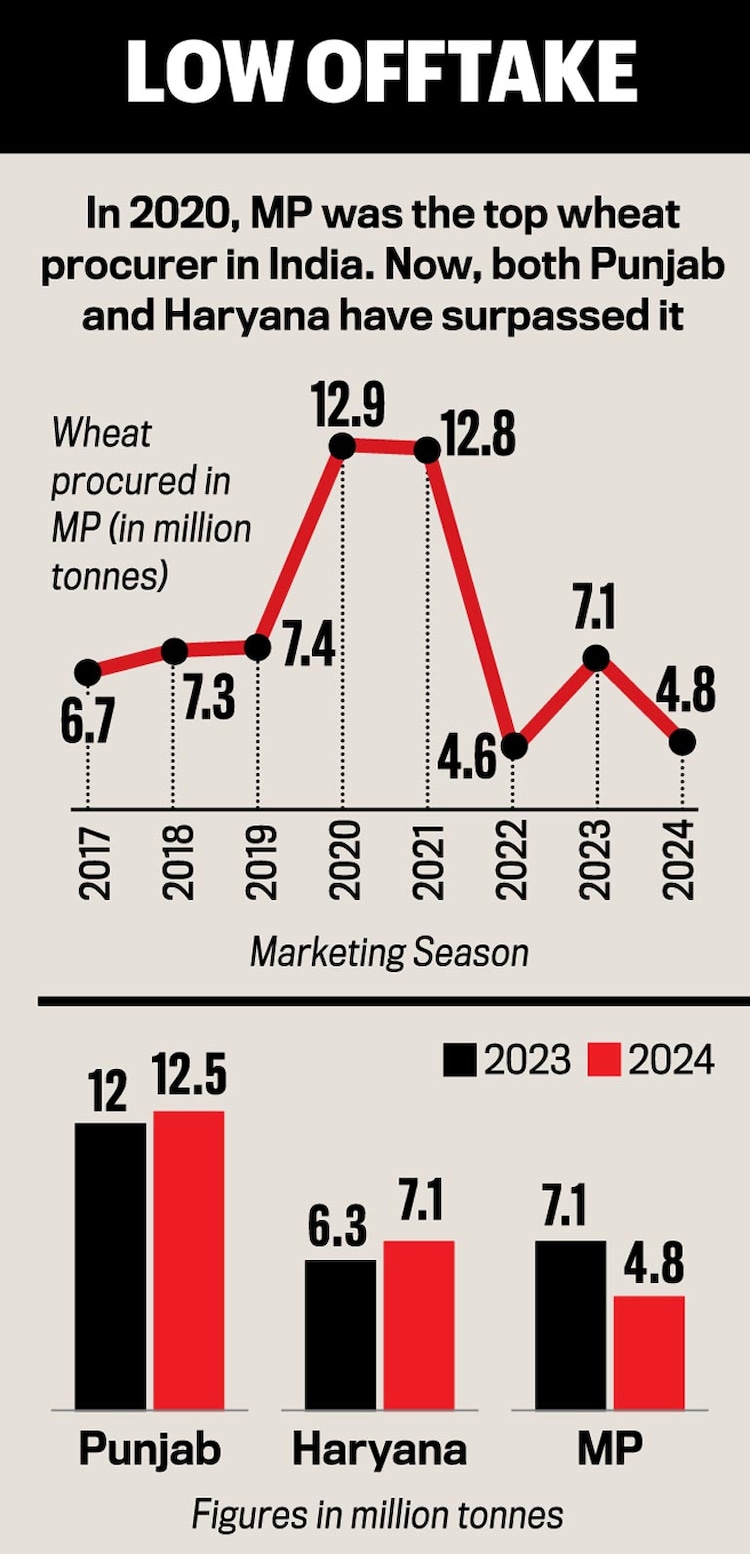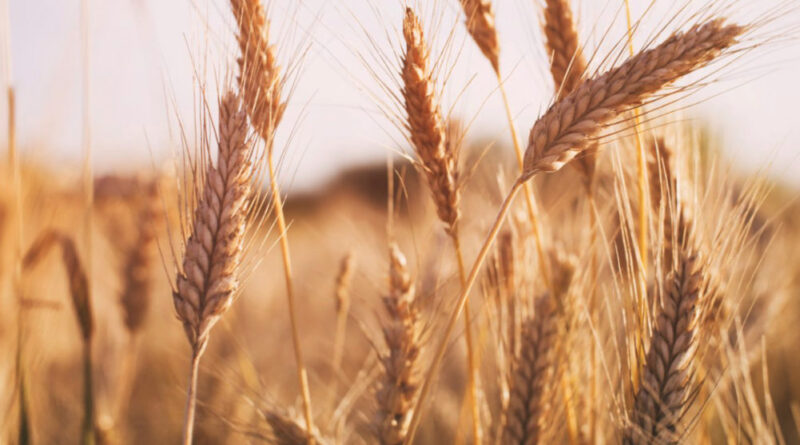Grain pain in Madhya Pradesh: Why has procurement dipped?
By Rahul Noronha
A strange affliction seems to have gripped Madhya Pradesh this season. The country’s largest producer of wheat after Uttar Pradesh and among its major wheat-buying states is seeing an inexplicable drop in procurement. Till June 25, the last day of procurement, the central Indian state had recorded the purchase of just over 4.8 million tonnes of the staple crop as against the nearly 7.1 MT it had collected in the previous rabi marketing season. What makes Madhya Pradesh an outlier is the fact that other states have procured at either the same levels as last year or even more.
This is especially striking because Madhya Pradesh offers a higher procurement price for wheat than all other states—Rs 2,400 per quintal compared to Rs 2,275, since it pays Rs 125 as bonus per quintal. You would imagine that was sufficient to get its wheat-growers to make a beeline for the procurement centres. But the unexplained lethargy is of such an order that many are wondering if it will end up affecting the country’s food security. As June winds down, the stocks with the Food Corporation of India (FCI) stand at 30.3 MT, just slightly more than the buffer norm of 27.5 MT.

Wheat procurement commenced in some districts on March 15 and spread to the entire state by March 25. The last date for procurement was May 15, but this was extended to May 31 and later all the way to June 25 as procurement failed to pick up. Sources in the government say the extension was announced at the behest of the Centre, which, too, is worried about the buffer stocks. India’s total procurement stood at 26.6 MT on June 16, much lower than the target of 37.3 MT for this marketing season. The gap, say experts, is mainly due to the low procurement in Madhya Pradesh.
Even agriculture experts are racking their heads to come up with a reason for the sluggishness. On the official side, they are citing the erratic weather during the crop cycle to paint a picture of less-than-bountiful farms. “There has been a drop in production due to unseasonal rains during harvest season and extreme heat conditions in the period before harvesting,” says Ravindra Singh, the state’s food and civil supplies commissioner. Officials also hint at an entirely different track, which would seem incompatible with the one above. Private sector procurement via mandis, they say, has been higher this year compared to previous seasons. Higher prices were on offer here for better quality wheat than what the government was offering. Consequently, a considerable quantity of the wheat available went the private sector players’ way. “Farmers who can afford to do so are also holding stock in the hope that prices will rise further post monsoon,” adds Singh.
Independent experts are refusing to buy the official line of lower production as an adequate explanation. Dr J.B. Singh, head of the Indore regional centre of the Indian Agricultural Research Institute (IARI), acknowledges some decline but not on a scale that could reflect in plummeting procurement. “A round of rain in late September and early October last year made farmers sow in October. This was followed by a period of high temperatures, which prevented tillering—leading to a drop in production,” he says. “But the drop would only be around 4-5 per cent. Not substantial.”
Wheat has been one of Madhya Pradesh’s success stories in recent decades. The state now produces 23-24 MT of wheat, the highest after Uttar Pradesh, where production surpassed 34 MT in the 2022-23 rabi season. Productivity in Madhya Pradesh is in line with the national average: 34 quintals per hectare. Off the record, officials speak of stringent quality norms being enforced, and that contributing to the depleted offtake. Government buying centres are said to be rejecting discoloured grain, a curse of the unseasonal rain during harvest, dampening offtake. “The lower the procurement, the lesser the financial outflow in bonus payment,” says a Mantralaya official who does not wish to be identified. “A host of welfare schemes announced ahead of the assembly polls are bleeding MP financially. Discouraging sale of wheat to the government will help conserve funds.”
Farmers complain of a lag in payment compared to previous years, acting as another disincentive. Away from official circles, another explanation doing the rounds is of a dearth of enthusiasm among farmers for official procurement centres. Those who have loans due with state cooperative banks avoid selling their produce to the government as the loan amount is deducted from the sale proceeds. Instead, they sell to private traders.
At the end of last year, in its assembly election manifesto, the ruling BJP had promised to buy wheat at Rs 2,700 per quintal. When the new Mohan Yadav-led government took charge in February, it announced only a bonus of Rs 125 per quintal over the Rs 2,275 central MSP for wheat. The effective total—Rs 2,400—is well short of the promised amount, but the highest for any state, and perhaps proving too high for Madhya Pradesh. Despite the low procurement, the state’s current stock is far in excess of the 1.6 MT wheat it requires annually under the public distribution system (PDS).
Where does this low procurement place Madhya Pradesh vis-a-vis other states? In the rabi season of 2020-21, it was India’s top procurer, above Punjab and Haryana. This season, both states have overtaken it (see The Grain Drain). Punjab has surpassed its procurement of the previous year by 0.5 MT and Haryana by 0.8 MT. Even Uttar Pradesh, which procured only 0.21 MT last year, has procured 0.9 MT this time. All of which make Madhya Pradesh’s underachievement even bleaker.
This article has been republished from The India Today.

